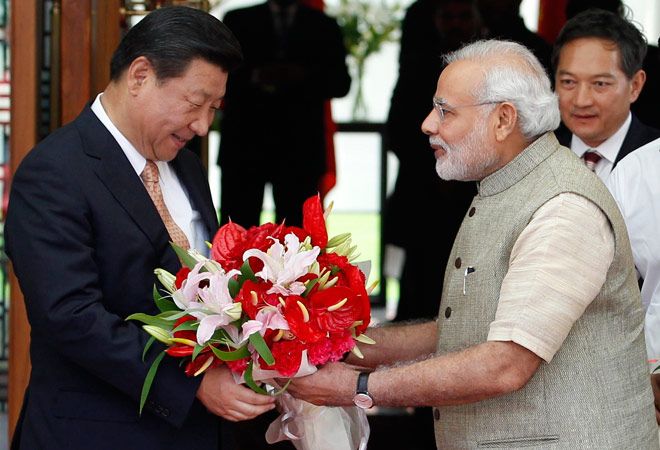
Narendra Modi’s diplomacy and persuasive prowess has ensured long-term investments from China and Japan, says Bikash Mohapatra.
The timing of Prime Minister Narendra Modi’s ‘Make in India’ campaign couldn’t have been better.
Before embarking on his maiden visit to the United States, the Prime Minister has taken the initiative to showcase India as a manufacturing hub for the world.
One has to understand that as a country India doesn’t innovate but can manufacture. And it is this ability that India’s newly elected leader wants to capitalise on.
Modi’s brainchild focuses on easing restrictions, attracting foreign direct investments, building public-private partnership, giving the manufacturing sector a fillip, creating new jobs and harnessing India’s potential to the optimum.
While his first US visit is being looked upon with eager anticipation, Modi’s latest campaign has been welcomed in all quarters, as a perfect step to put the Indian economy back on track.

“Mr Modi has categorically stated that economics and development will be his co-drivers in foreign policy,” reasons Aisha De Sequeira, Co-Country head for Morgan Stanley India, adding, “He’s been very open in stating that we fix our house, get it back in order and the world will get attracted to us.
“The main challenge will be to attract capital to the country, to secure investment that drives growth. This capital will come from alliances with different countries, mostly through greenfield infrastructure opportunities.
“I think Mr Modi set most of his priorities based on that, thereby balancing economic and geo-political issues.”

De Sequeira, who also is the Head of Investment Banking at Morgan Stanley, elaborates,“The median age of the Indian population is round 26 years and the country will add 10 million people to the work force in each of the next three decades.
“In fact, it is this demographic change and the sheer number of people that will make India the work force of the world,” she asserts.
While Modi’s initiative has got a positive response early on, there’s a risk element involved as well. The recent years have witnessed a thaw in the bilateral relations between India and the United States, and it is a fact that ‘Make in India’ won’t be a success sans American participation and investment.
“Six or seven years ago whenever an American businesses discussed future plans, India was always top on the agenda,” analyses Marshall M Bouton, senior fellow at the Centre for the Advanced Study of India at the University of Pennsylvania.
“In the last few years India has been taken off that list, at least temporarily. Business people in the United States aren’t that confident aboutIndia anymore,” he adds.
De Sequeira, on her part, concurs to the above summation before proceeding to provide reasons for the same.

Photograph: PIB
“When economic growth in India went down from 8-9 per cent to 4-5 per cent, it presented a very different picture,” she reasons.
“When the American businesses looked at the Indian market vis-à-vis their own country, they were discouraged.
“The risk-reward trade-off, coupled with a very unstable regulatory environment in India, made the American enterprises take the capital back home and invest in their own market.”
The Morgan Stanley honcho albeit reiterates that there is renewed hope.
Hope floats from the fact that Modi’s diplomacy and persuasive prowess has ensured long-term investments from the world’s second (China) and third (Japan) largest economies.
During his maiden visit to Japan earlier in the month, the Indian Prime Minister got the assurance from his Japanese counterpart Shinzo Abe that the latter will pump in $35 billion in India over the next five years and speed up talks on a civil nuclear deal.
Later in the month, the Chinese President Xi Jinping, on his maiden visit to India, promised an investment of $20 billion.

It’s now Modi’s chance to influence the world’s largest economy, the United States.
“There’re going to be arguments within the government as to how Mr Narendra Modi should approach the relationship with the US even as he meets President Barack Obama,” observes Bouton, adding, “It’ll be up to the Indian Prime Minister to make the most of it.”
De Sequeira too, is enthused about India’s prospects amid Modi’s new initiative.
“In the past, there were always doubts about the execution of this potential, with questions being raised about the political framework’s ability to deliver,” she explains, adding, “The new government seems to be moving in the right direction.
“Besides, India is going to be a five trillion dollar economy in the next 20 years. It’s this potential that is getting people to look into India again.”

.jpg)








